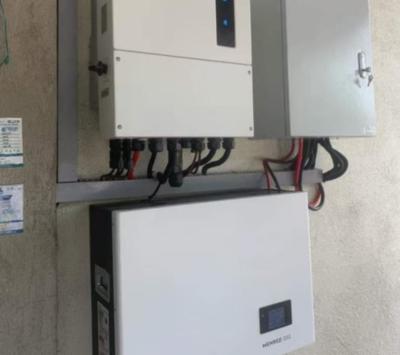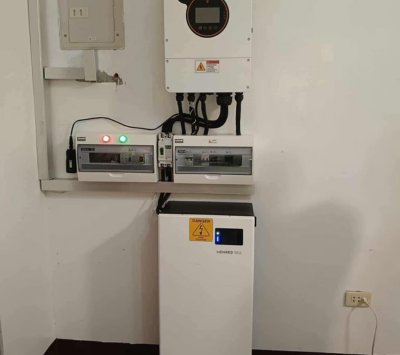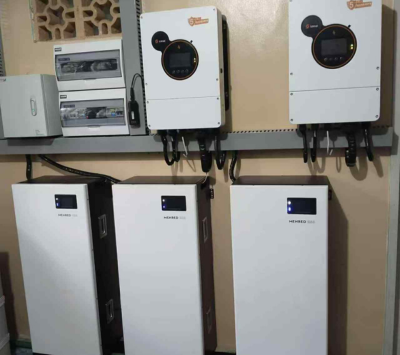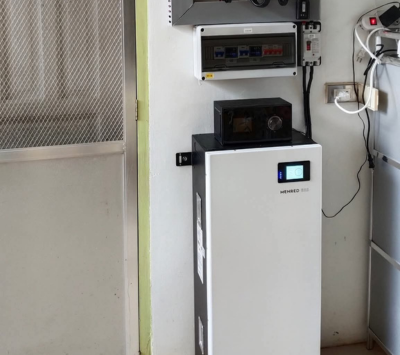Introduction
In an era where the shift towards renewable energy solutions is not just a choice but a necessity, MENRED ESS emerges as a beacon of innovation, particularly in the realm of residential photovoltaic storage systems. This article aims to explore their groundbreaking project at East Canal Park in Yueqing – a project that illuminates the park with nightly light shows and stands as a significant milestone towards sustainable urban development.
Background of the Project
Located in the bustling heart of Yueqing, China, East Canal Park is a symbol of the city’s commitment to green energy and innovative urban planning. This project is a critical component of MENRED ESS’s initiative to promote zero-energy and zero-carbon buildings by 3060, aligning seamlessly with China’s ambitious standards for zero-energy buildings.
Project Address:
East Canal Park Yueqing, China, 325600
Configuration List:
- TrinaSolar Vertex N 610W Monosilicon Solar Panels x 10, Total 6.1kWp
- MENRED ESS ESS.RL1.612 Residential PV Energy Storage System x 1, 6KW ON-Grid/OFF-Grid power and 12.28kWh battery system
In the MENRED ESS project at East Canal Park, we employed ten Trina Solar Vertex N 610W Monocrystalline Silicon Solar Panels, achieving a total power output of 6.1kWp. These high-efficiency panels, each with an open-circuit voltage of 46.6V, are connected in series to deliver a photovoltaic voltage of up to 466Vdc when entering the ESS.RL1.612, aligning perfectly with its maximum voltage requirement of 500Vdc. This not only ensures the system’s high efficiency but also meets the highest standards of solar energy performance.
As for the installation of the solar panels, we adopted an approach that balances practicality with aesthetics. The panels are laid out flat, covering an area of approximately 30 square meters on the roof. To maintain the original architectural design, the solar panels were cleverly installed within the building’s rooftop annex. This installation method ensures the efficient operation of the solar panels while keeping them out of sight from visitors, seamlessly blending sustainable energy technology with architectural beauty.
The park’s proximity to the sea, just 100 meters away, ensures ample sunlight for the solar panels. However, the construction of the coastal economic belt in Yueqing City brought significant dust, leading to dust accumulation on the surfaces of the solar panels. Considering this, we have planned regular cleaning of the solar panels to maintain their high efficiency and energy generation capability.
The installation and maintenance strategy of these solar panels reflect our meticulous approach to implementing sustainable energy technologies. It emphasizes not only the efficiency of the technology but also considers the aesthetic integration and specific local conditions. The MENRED ESS project showcases how advanced renewable energy technology can be cleverly integrated into urban environments while maintaining and enhancing the natural and architectural beauty of the area.





In the installation of the energy storage system for the MENRED ESS project at Dongyun Canal Park, we engineered a special mounting bracket, approximately 50cm high, to safeguard the system. This precaution is crucial given the system’s indoor location near a river and the sea, making device safety paramount, especially considering the risk of water damage. The use of the ESS.RL1.612 in this setup includes a 6KW continuous output and a 12.28kWh lithium iron phosphate (LFP) battery, model LFP.6144.G2, which supports 1C charging and discharging.
The system is configured to operate in a self-consumption mode, prioritizing the use of photovoltaic-generated power for immediate load demands. Any excess electricity is then directed to charge the battery. Should the power surplus continue, the system is designed to feed into the grid, maximizing the utilization of solar energy. This approach not only enhances the efficiency of the energy storage system but also ensures the highest degree of safety and reliability, crucial in the project’s riverside and coastal context.


The MENRED ESS.RL1.612 system comes equipped with an application that’s compatible with both Android and iOS devices, offering comprehensive monitoring capabilities. This app allows users to stay up-to-date with the operational status of the entire energy system in real-time. With this application, users have access to detailed data, including the State of Charge (SOC) of the battery, daily photovoltaic power generation, grid electricity purchase, as well as battery charging and discharging volumes, and the amount fed into the grid. Additionally, the app facilitates the adjustment of system operational modes, including on-grid and off-grid power settings.
Moreover, the app enables users to define specific times for grid electricity to charge the battery and set discharge periods. Users can even input different electricity rates for various time slots to calculate the system’s profitability. All of this functionality is accessible over WIFI or 4G connections to the database, ensuring that users can monitor the entire photovoltaic storage system and building power usage from anywhere at any time.
This monitoring capability not only brings convenience to the users of the MENRED ESS.RL1.612 system but also provides transparency in energy use and management. It’s a key tool for achieving efficient energy management and contributing to energy conservation and emission reduction goals.

Technical Specifications of the MENRED ESS System
The MENRED ESS residential photovoltaic storage system is a marvel of modern engineering technology. On average, the system generates about 21kWh of electricity daily, with a self-consumption ratio of up to 95%. This capability satisfies up to 90% of a building’s energy needs, showcasing the system’s remarkable efficiency.
Environmental Impact and Sustainability
Implementing the MENRED ESS system at East Canal Park marks a significant step forward in environmental responsibility. Not only does the system meet China’s zero-energy building standards, but it also advocates for these standards, reflecting a commitment to a sustainable future. Its application within the urban park setting demonstrates how the integration of renewable energy can enhance the quality of city life while honoring environmental boundaries.
The Role of Renewable Energy in Urban Environments
The adoption of renewable energy solutions like the MENRED ESS system within urban settings such as East Canal Park highlights a broader shift toward sustainable urban planning. Cities, often burdened with pollution and high energy consumption, are increasingly seeking such solutions to reduce their carbon footprint and promote healthier, more sustainable lifestyles.
The Future of Renewable Energy in Urban Development
The MENRED ESS project at East Canal Park is more than just a technological achievement; it’s a blueprint for the future of sustainable urban development. It showcases the immense potential and necessity of integrating residential photovoltaic storage systems within urban environments, benefiting the environment and enhancing the quality of urban life.
As the world continues to face challenges related to climate change and energy sustainability, solutions like the MENRED ESS residential photovoltaic storage system pave the way toward a greener, more sustainable future. The project at East Canal Park is a shining example of how innovative technology can fulfill our environmental commitments while adding value to urban spaces. It’s a step towards a future where sustainable living and urban development go hand in hand.






